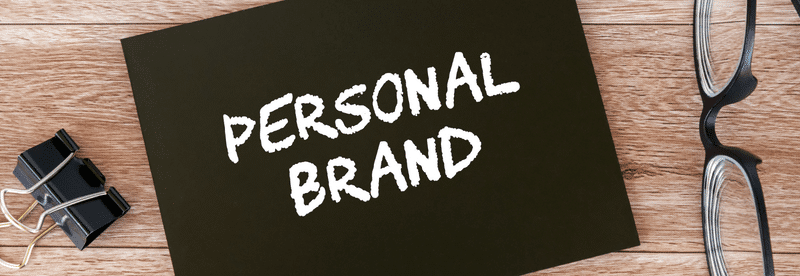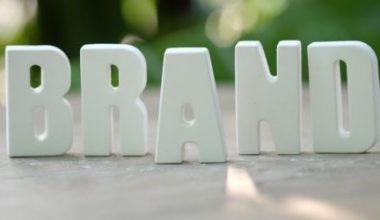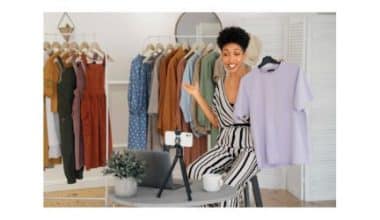When I initially started evaluating personal brand statements, I was surprised at how many professionals were repeating the same mistakes. Creating a compelling personal brand statement is critical, yet many people fall short. After evaluating more than 1000 profiles, I discovered that 90% contained at least one substantial inaccuracy. In this article, I will discuss the most prevalent mistakes and how to avoid them, backed up by data and personal experiences. Whether you’re a seasoned professional or just getting started, these guidelines can help you establish a memorable personal brand statement that accurately portrays your worth and skills.
What is a Personal Branding Statement?
A personal brand statement is one to three phrases that describe what you do and why you are unique in your profession. It summarizes your experience, talents, and enthusiasm so that others may quickly understand who you are and what you provide.
It should be brief and catchy but also contain enough engaging information to demonstrate your value and personality.
Consider it your catchphrase – a tagline or slogan to market yourself!
Why Personal Brand Statements Matter
A personal brand statement is more than a tagline; it’s a brief description of who you are, what you do, and what distinguishes you. It’s an essential instrument for professional development and personal promotion.
A CareerBuilder poll found that 70% of employers utilize social media to screen candidates during the recruiting process, emphasizing the necessity of a strong personal brand.
Five Common Mistakes in Personal Brand Statements
#1. Lack of clarity and specificity
One of the most common mistakes is a lack of clarity. A personal brand statement should be specific and straightforward about what you offer.
Example: Rather than saying “I am a marketing expert,” describe your niche and influence, such as “I help tech startups increase their online presence through data-driven marketing strategies.”
Why It Matters: Specificity enables potential employers or clients to rapidly understand your expertise and how you can contribute value.
#2. Overuse of buzzwords
Buzzwords might make your statement seem generic and disingenuous. Terms like “dynamic,” “synergistic,” and “results-oriented” are frequently used and can dilute your message.
Example: Replace the phrase “results-oriented leader” with a specific accomplishment, such as “led a team of 20 to increase sales by 30% within six months.”
According to a LinkedIn analysis, keywords such as “motivated” and “passionate” are among the most commonly used buzzwords on profiles.
#3. Being too vague
Vagueness can make your audience wonder about your genuine abilities and accomplishments. Ensure that your statement contains enough detail to be relevant.
Example: Instead of saying “I have a lot of experience in project management,” enter “With over 10 years of experience managing multimillion-dollar projects, I specialize in efficient team coordination and budget optimization.”
#4. Ignoring the audience
Your personal brand statement should be specific to your target audience’s demands and expectations. Determine who will read your statement and what they are searching for.
Example: When targeting potential employers, emphasize skills and accomplishments relevant to the employment market. If you want to attract clients, underline your unique selling features and how they benefit them.
#5. Lack of authenticity
Authenticity is essential in personal brand statements. Exaggerations and inaccurate assertions should be avoided because they can undermine your reputation.
Example: Be truthful about your abilities and experience. Instead of claiming to be the best, highlight your journey and the unique approach that distinguishes you.
According to a Sprout Social poll, 86% of customers prioritize authenticity when determining which brands to like and support.
How to Create an Effective Personal Branding Statement
Developing a great personal brand statement requires a thorough grasp of your basic values, strengths, and target audience. Here are the specific steps to help you create a statement that really defines your professional identity:
Step #1: Think about your values and strengths
Begin by identifying your key values, strengths, and passions. Consider your motivations and areas of strength. This introspection is critical because it creates the cornerstone of your personal brand.
Question to Consider:
- Which ideals govern my decisions and actions?
- What specific talents and experiences do I bring to the table?
- What aspects of my job do I enjoy the most?
Example: “My passion for sustainable design and my background in architecture allow me to create innovative eco-friendly solutions for urban development.”
Taking the time to focus on these things guarantees that your personal brand statement is real and true to yourself.
Step #2: Determine Your Target Audience
Decide who you want to reach with your personal brand statement. Understanding your audience’s requirements and expectations is critical for developing a message that will resonate with them.
Questions to Consider:
- Who are the key people I want to impress or influence (employers, clients, and coworkers)?
- What are their needs, challenges, and goals?
- How can my talents and expertise meet their specific requirements?
Example: “I help small business owners navigate the complexities of digital marketing to increase their online visibility and drive sales.”
By personalizing your message to your audience, you ensure that your statement addresses their specific interests and promotes your relevance.
Step #3: Be concise and compelling
Your personal brand statement should be succinct yet impactful. Aim to explain your essence and value proposition in a few simple lines that can be remembered and repeated.
Tips for Conciseness
- Concentrate on your primary strengths and noteworthy accomplishments.
- Avoid jargon and unneeded information.
- Highlight what distinguishes you from others in your field.
Example: “As a data analyst with a knack for uncovering actionable insights, I transform raw data into strategic decisions that drive business growth.”
A brief statement helps others comprehend and remember your major qualities and accomplishments.
Step #4: Use Active Language
Active language makes your personal brand statement more vibrant and appealing. It expresses confidence and decisiveness, both of which are necessary for leaving a lasting impression.
Tip for Active Language:
- Use action verbs when describing your accomplishments and efforts.
- Avoid using passive constructs, which can make your statement less compelling.
- Concentrate on the impact you’ve made or hope to make.
Example: “I lead projects that revolutionize healthcare systems through innovative technology solutions.”
Using active language allows you to convey a proactive and impactful professional image.
Step #5: Review and revise
Regularly revising your personal brand statement ensures that it accurately reflects your current accomplishments and professional goals. Seek feedback from trusted coworkers, mentors, or friends to improve your message.
Steps to Review:
- Update your statement regularly to reflect new accomplishments or shifts in your career trajectory.
- Seek comments from peers to gain diverse perspectives.
- Adjust your statement to reflect your changing professional goals and audience demands.
Example: “After receiving feedback from my network, I refined my statement to better highlight my recent work in AI-driven market analysis.”
Continuous review and refinement ensure that your personal brand statement remains relevant and compelling, effectively communicating your growing professional identity.
How Long Should a Brand Statement Be?
In general, you want your personal brand statement to stick in people’s minds. Think of your favorite jingle and try to convey the same spirit. Audiences might be interested in hearing about your career’s spectacular story. However, your audience is unlikely to recall much of the story.
What consumers really need is a reason to stop and smell the roses, with your brand serving as the garden. You can find examples of personal brand statements of various lengths.
Most of us can summarize our favorite films or novels in a few phrases. Meanwhile, it takes many hours to view a movie and days to read a book. So it is apparent that impressions last a long time. It also displays our ability to select the information we need while leaving out the ones we don’t.
Furthermore, individuals do not always have time to hear through long-winded pitches from every excited businessperson. They’d much prefer to have Cliff’s Notes about your venture and make their selection immediately. Think of your brand statement as a smart catchphrase. It should reflect what you want others to know, understand, or value about you.
Examples of Personal Branding for 2024
The following are excellent personal brand statement examples and personal branding success stories from diverse entrepreneurs, including authors, course creators, and marketing specialists.
Each has a personal brand that enables them to connect with their target audience, develop trust, and achieve their own objectives.
There are numerous personal branding “Dos” and “Don’ts” to be aware of when developing your personal brand, therefore we focused on what these successful individuals are doing correctly with their personal brands.
#1. Aliza Kelly
Aliza Kelly, a Teachable creator, is a professional astrologer and best-selling book. She teaches astrology courses and manages the Constellation Club, a network for those interested in witchcraft.
Why does her personal brand work?
- Her catchphrase, “Meet Aliza, your new witchy bestie,” immediately engages her audience and demonstrates her upbeat demeanor and tone of voice.
- The style of her website also precisely complements her brand, which is an important visual branding tactic. For example, the photographs are in frames that resemble tarot card shapes.
- On her About page, she engages her audience and establishes credibility. She discusses her experience, which included co-founding Align, an astrology dating app.
- Her news coverage also boosts her reputation. Her website contains a press section highlighting her appearances in Bumble, Refinery29, Cosmopolitan, and other publications.
#2. Jay Clouse
Jay Clouse is a course creator, podcaster, and writer who helps people achieve creative independence. He is one of the most effective content creator brand examples.
Why does his personal brand work?
- His personal brand statement is prominently displayed above the fold on his website: “I help people become professional creators.” It explains what he does and who he serves.
- The subhead increases trust by indicating that over 22,000 creators have already subscribed.
- Then, on the newsletter page, he emphasizes his brand’s worth with the following statement: “Become a smarter creator in just 10 minutes per week.”
Jay also owns a company called Creator Science that offers a variety of items, including:
- A podcast.
- Online courses
- A newsletter.
- Workshops
- A membership named The Lab
However, each product feels like an extension of Jay’s brand. Part of this is due to the design’s usage of similar colors, typefaces, and other elements. Having a consistent content strategy for personal brands is critical for long-term success.
#3. Alice Thorpe
Alice Thorpe is a freelance graphic designer and content creator with more than 122,000 YouTube subscribers. She helps creatives enhance their design talents by sharing her expertise via YouTube, Instagram, digital downloads, and online courses.
Why does her personal brand work?
- Her relaxed and colorful design aesthetic is consistent across all platforms.
- Alice’s content reflects her genuine and cheerful personality, which helps to attract and create trust with her target audience.
- Her brand statement, “Let’s design things and have fun together,” demonstrates her abilities and reinforces her joyful personality.
#4. Tony Robbins
Tony Robbins is an established life and business strategist and author. He uses seminars, publications, and coaching programs to help others build the life they want. He has millions of followers on Instagram, Twitter, and YouTube.
So he undertakes public speaking at events and conferences as part of his job as a coach, and he is a fantastic example of how outstanding public speaking and personal branding go hand in hand, as well as how you can establish a personal brand outside social media.
Why does his personal brand work?
- He employs numerous professional photographs across his platforms, demonstrating his confidence, authority, and authenticity.
- His branding also reflects his personality, upbeat attitude, and determination to achieve.
- He interacts with his audience by sharing personal experiences from his youth.
#5. Melyssa Griffin
Melyssa Griffin is a course creator, blogger, and podcaster who helps entrepreneurs grow their businesses. She has over 20,000 students in her classes and has been featured in Business Insider, Forbes, and Entrepreneur.
Why does her personal brand work?
- It is based on authority, empathy, and honesty.
- Her humorous photos, videos and the brand’s vibrant colors reflect her upbeat personality. Her graphic assets are excellent sources of personal brand design inspiration.
- Each section of her website builds trust, including press coverage and genuine client testimonials. There is even a success stories page that showcases the achievements that clients have achieved after completing their classes.
- She also clearly outlines how each product—including quizzes, The Limitless Life podcast, and courses—benefits her target demographic. For example, her online course page emphasizes the value of equating knowledge to obtaining a digital MBA. It also explains the advantages and why you should pick it—you get all of that information without the dreaded student loan debt.
#6. Nesha Woolery
Nesha Woolery is a coach and content developer who helps women start and grow online businesses.
Why does her personal brand work?
- To attract her target market, she uses a direct but pleasant tone.
- On her website, she describes her aim as “I built a gentle business that supported the kind of life I dreamt of living.” She then emphasizes virtues such as independence, healing, security, and adventure.
- Her personal brand statement demonstrates the value she provides to her audience: “Turn your dream life into reality through online business and mindset.”
#7. Tiffany Aliche
Tiffany Aliche, sometimes known as “The Budgetnista,” is a personal finance educator and New York Times bestselling author. Over the years, she has assisted over two million women with their finances and established one of the strongest personal brands in the process.
Establishing credibility and authority is very important in the financial industry. Tiffany accomplishes this successfully by having her press features published in credible and frequently finance-focused newspapers such as The Wall Street Journal, MSNBC, CNN, and others.
Why does her branding work?
Her personal branding statement, “Learn to get good with your money,” explains how her skills can help people.
She promotes her #LiveRicher movement through her website and several social media platforms. This demonstrates her desire to make financial education widely available and understandable.
Her brand design incorporates money-related colors (green and yellow) across all channels, from her website to social media.
#8. Jenna Kutcher
Jenna Kutcher is a marketing expert and bestselling author. Her Goal Digger Podcast is one of the most popular marketing podcasts in the country.
Her purpose is to assist people in establishing a successful business and life for themselves. She has millions of Instagram followers and more than 90 million podcast episode downloads.
Why does her branding work?
- She connects with her target audience through honesty, lively colors, and images.
- Her website and social media pages have a consistent brand design, which helps to generate trust.
- One of her best social media branding tips, which she provides on her podcast and blog, is to be consistent in how you present yourself to your audience, and she takes her own advice.
- She shares her skills on a variety of platforms, including her blog, classes, and educational podcasts.
#9. Noah Kagan
Noah Kagan is a highly successful entrepreneur and content developer. He is also the CEO of AppSumo, a company that provides software solutions to support other business owners.
Noah is one of the strongest personal branding examples because it directly helped to his development.
For instance, he has established a consistent brand that includes his:
- YouTube channel has almost 763,000 subscribers.
- Newsletter with more than 100,000 readers.
- Instagram has nearly 200,000 followers.
Why does his branding work?
- His website and brand design are basic and highlight his valuable material, abilities, and expertise.
- He further emphasizes his credentials and experience in assisting firms to expand by saying that he was employee number 30 at Facebook and four at Mint.
- The colors, tone of voice, and excitement from his website cross over to his YouTube channel, newsletter, and firm.
- He also describes four specific methods that he assists entrepreneurs with each product and channel.
#10. Sade Kelly
Sade Kelly is a time management consultant and content creator. She’s also a self-described go-getter and hype woman. She teaches ambitious women how to manage their time effectively so that they may balance work, wellness, and relationships happily.
Why does her branding work?
Her empathic language aids her in developing relationships with her target audience.
The company’s moniker, The Fire Inside, serves as inspiration for her brand voice. She develops recognizable sayings such as
She uses the phrases “ignite your life” and “ignite the fire inside you” to demonstrate how she helps others.
What do these examples have in common?
These personal branding examples are all distinct, but they share essential similarities with strong branding.
- They maintain a constant tone, design, and talent.
- Positivity – Each has a unique personality, yet they all exude positivity.
- Value – They show what they can provide their target market.
Keep these characteristics in mind as you create your personal brand.
Key Takeaways
- Define your niche and the value you provide.
- Use specific examples and accomplishments rather than broad buzzwords.
- Write your statement with your intended audience in mind.
- Be honest about your abilities and experiences.
- Keep your statement current and relevant to represent your progress.
Conclusion
Creating a strong personal brand statement can greatly improve your professional image. Avoid frequent mistakes by being explicit, specific, and genuine. To ensure that your statement remains relevant, evaluate and update it regularly. Have you examined your personal brand statement recently? What modifications have you made? Share your stories, and let’s talk about how we can all better our personal brands.
Related Articles
- Personal Brand Traits: Your Key to Trust, Excellence, and Effective Leadership
- How To Do Rebranding Campaign Effectively: Expert Ideas!!
- Personal PR: A Simple Guide to Managing and Promoting Your Image in 2024
- 10 Must Have Personal Traits of a Media Relations Expert
- PERSONAL BRAND ATTRIBUTES: What They Are, How to Define Yours and Enhance Them






